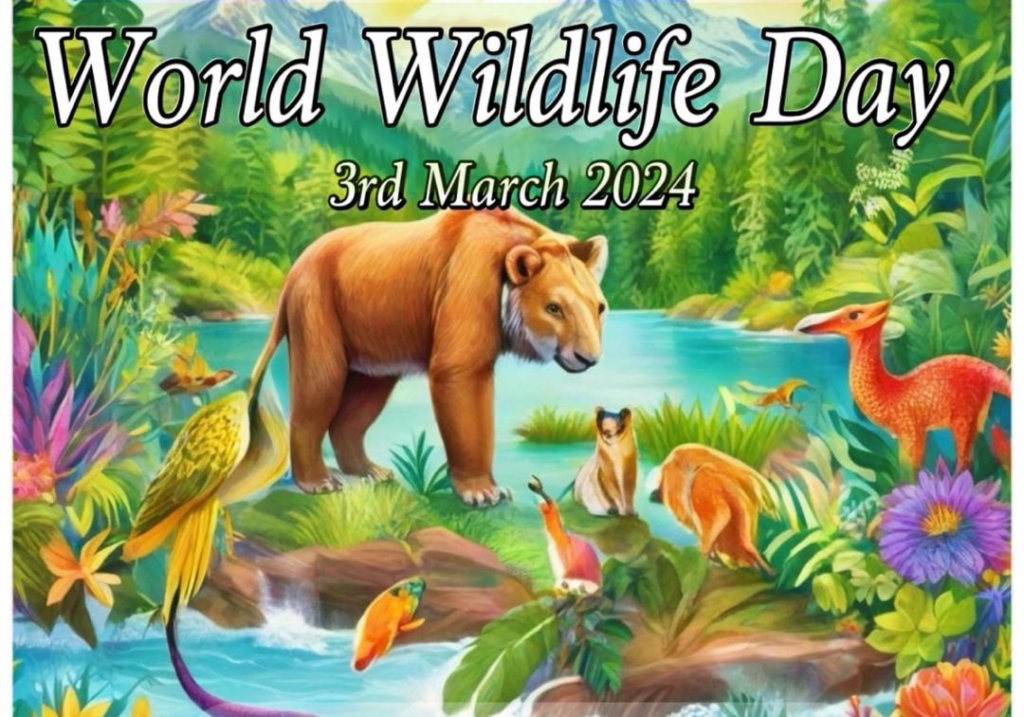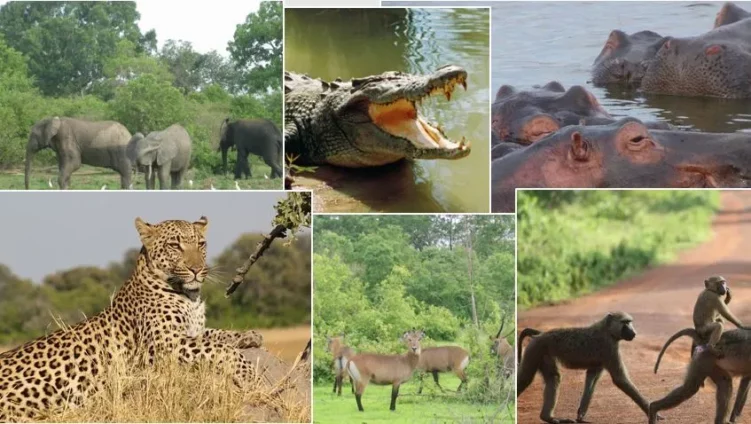The World Wildlife Day falls on the 3rd of March 2024 with the theme “Connecting People and Planet: Exploring Digital Innovation in Wildlife Conservation.”
This theme explores digital innovation and use of digital conservation technologies and services in wildlife conservation, sustainable management and human-wildlife coexistence for the present and future generations.
It is of prime importance in an increasingly connected world as a result of the global digital revolution that is breaking down barriers to people-centered digital governance.
It also offers equal opportunities for countries with internet connectivity and access such as Ghana to unleash the power of digital technologies and services in the sustainable management of its wildlife resources and addressing human-wildlife conflicts.
Additionally, it makes it easier to have ease of access to accurate and efficient data for decision support in wildlife conservation and management. It is therefore important that Ghana, a country immersed in nature’s magnificence should bridge conservation, digital technology and innovation in the sustainable management of its wildlife resources.
As we celebrate the World Wildlife Day, it is important to highlight the role of Global Positioning System (GPS) Collars and Transmitters in wildlife conservation in Ghana. It is a well-established fact that conservation efforts have reached an unprecedented high level of advancement in the use of digital technology. Interestingly, the application of digitization promotes citizen science.

The increasing accessibility and use of smartphone application such as OnX and Gaia and other devices enable people’s active involvement in data collection and sharing. This offers an expanded scope of data across different geographical areas covering high species diversity.
Indeed, citizen science creates higher involvement of local people in conservation work with increased awareness and enhanced response to wildlife threats. The success of some citizen science platforms, for example, iNaturalist and eBird have created conscious efforts by people to contribute to observational data.
The revolutionary role of using geo-location data through GPS collars and transmitters in appreciating the behavior of wild animals, estimating migratory routes and habitat utilization is unprecedented. Conservationists through these tracking devices make valuable decisions to conserve threatened species. Researchers and conservationists in Ghana are gradually embracing the relevance of digitization in wildlife conservation, hence the need to explore both current and future digitization advances.
When GPS collars and transmitters are attached to animals, conservationists are able to retrieve significant data on how different wildlife species interact with their environment. This enables the development of specific conservation plans and priorities aimed at defined wildlife population and habitats.
These devices have contributed to understanding and protecting threatened species within the Protected Areas, Community Resource Management Areas (CREMAs) and other conservation areas under the protection and management of communities, civil society organisations amongst others. This is enabling a gradual shift of conservation efforts to data-enhanced strategies.
Its usage helps to identify high risk areas of poaching, human wildlife conflicts, habitat depletion, concentration of land-use activities, climate change and the mitigation of biodiversity threats.
Despite the current role of digitization in wildlife conservation in Ghana, there is the need to reminiscence the challenges associated with data privacy, high cost of monitoring devices, the size of tracking devices relative to animal behavior and analysis of large datasets.
It sounds to reason that future proposals must include high investments into the application of these monitoring devices, exposing high numbers of the student population in the tertiary institutions and the populace to the use of e-platforms, use of micro-weight devices, and application of Artificial Intelligence to retrieve, analyze and predict effective conservation strategies for the country.
This can however, be achieved through enhanced collaborative efforts between the stakeholders in the wildlife sector namely the Ministry of Lands and Natural Resources, the Wildlife Division of the Forestry Commission, the Metropolitan, Municipal and District Assemblies (MMDAs), local populace and Non-Governmental Organisations (NGOs) to which the Resource Conservation Initiative (RESCONI) is playing a valuable integral role.
To this end, RESCONI recommends to all stakeholders to collectively explore innovative methodologies at collectively engaging with the citizenry especially the youth in finding innovative and cutting-edge digital technologies for the protection and conservation of the precious wildlife resources of the country. This will spark synergies to inspire cross-sector collaborations that foster the application of novel digital innovations and technologies to sustainably manage the wildlife resources of the country.
Latest Stories
-
Expansion Drive: Takoradi Technical University increases faculties
4 hours -
SHS heads demand payment of outstanding funds before reopening of schools
5 hours -
We thank God for the 2024 general elections – Akufo-Addo
5 hours -
Coconut Grove Beach Resort marks 30 years of excellence with memorable 9 lessons & carols service
5 hours -
WAFU B U-17 Girls’ Cup: Black Maidens beat Nigeria on penalties to win inaugral tournament
6 hours -
Real Madrid beat Sevilla to keep pressure on leaders Atletico
7 hours -
Liverpool put six past Spurs to go four points clear
7 hours -
Manchester United lose 3-0 at home to Bournemouth yet again
7 hours -
CHAN 2024Q: ‘It’s still an open game’ – Didi on Ghana’s draw with Nigeria
7 hours -
CHAN 2024Q: Ghana’s Black Galaxies held by Nigeria in first-leg tie
8 hours -
Dr Nduom hopeful defunct GN bank will be restored under Mahama administration
9 hours -
Bridget Bonnie celebrates NDC Victory, champions hope for women and youth
9 hours -
Shamima Muslim urges youth to lead Ghana’s renewal at 18Plus4NDC anniversary
10 hours -
Akufo-Addo condemns post-election violence, blames NDC
10 hours -
DAMC, Free Food Company, to distribute 10,000 packs of food to street kids
11 hours

